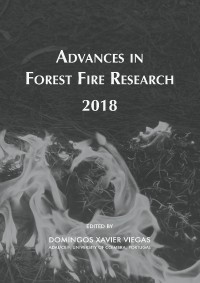Please use this identifier to cite or link to this item:
https://hdl.handle.net/10316.2/44621| DC Field | Value | Language |
|---|---|---|
| dc.contributor.author | Kochanski, Adam K. | |
| dc.contributor.author | Mandel, Jan | |
| dc.contributor.author | Vejmelka, Martin | |
| dc.contributor.author | Burke, Dalton | |
| dc.contributor.author | Hearn, Lauren | |
| dc.contributor.author | Haley, James | |
| dc.contributor.author | Caus, Angel Farguell | |
| dc.contributor.author | Schranz, Sher | |
| dc.date.accessioned | 2018-11-09T22:42:16Z | |
| dc.date.accessioned | 2020-09-05T02:04:25Z | - |
| dc.date.available | 2018-11-09T22:42:16Z | |
| dc.date.available | 2020-09-05T02:04:25Z | - |
| dc.date.issued | 2018 | - |
| dc.identifier.isbn | 978-989-26-16-506 (PDF) | |
| dc.identifier.uri | https://hdl.handle.net/10316.2/44621 | - |
| dc.description.abstract | In this paper, we present an integrated wildland fire forecasting system based on combining a high resolution, multi-scale weather forecasting model, with a semi-empirical fire spread model and a prognostic dead fuel moisture model. The fire-released heat and moisture impact local meteorology which in turn drives the fire propagation and the dead fuel moisture. The prognostic dead fuel moisture model renders the diurnal and spatial fuel moisture variability. The local wind and the fuel moisture variation drive the fire propagation over the landscape. The sub-kilometer model resolution enables detailed representation of complex terrain and small-scale variability in surface properties. The fuel moisture model assimilates surface observations of the 10h fuel moisture from Remote Automated Weather Stations (RAWS) and generates spatial fuel moisture maps used for the fire spread computations. The dead fuel moisture is traced in three different fuel classes (1h, 10h and 100h fuel), which are integrated at any given location based on the local fuel description, to provide the total dead fuel moisture content at the fire-model grid, of a typical resolution of tens of meters. The fire simulations are initialized by a web-based control system allowing a user to define the fire anywhere in CONUS as well as basic simulation properties, such as simulation length, resolution, and type of meteorological forcing for any time meteorological products are available to initialize the weather model. The data is downloaded automatically, and the system monitors execution on a cluster. The simulation results are processed while the model is running and displayed as animations on a dedicated visualization portal. | eng |
| dc.language.iso | eng | - |
| dc.publisher | Imprensa da Universidade de Coimbra | por |
| dc.relation.ispartof | http://hdl.handle.net/10316.2/44517 | por |
| dc.rights | open access | - |
| dc.subject | Fire forecasting | eng |
| dc.subject | Plume rise | eng |
| dc.subject | WRF-SFIRE | eng |
| dc.subject | WRFX | eng |
| dc.subject | wrfxpy | eng |
| dc.subject | Coupled fire-atmosphere modeling | eng |
| dc.subject | Web portal | eng |
| dc.subject | Automatic setup | eng |
| dc.title | Coupled fire-atmosphere-smoke forecasting: current capabilities and plans for the future | por |
| dc.type | bookPart | por |
| uc.publication.firstPage | 950 | - |
| uc.publication.lastPage | 958 | - |
| uc.publication.location | Coimbra | por |
| dc.identifier.doi | 10.14195/978-989-26-16-506_104 | - |
| uc.publication.section | Chapter 5 - Decision Support Systems and Tools | por |
| uc.publication.digCollection | PB | por |
| uc.publication.orderno | 104 | - |
| uc.publication.area | Ciências da Engenharia e Tecnologias | por |
| uc.publication.bookTitle | Advances in forest fire research 2018 | - |
| uc.publication.manifest | https://dl.uc.pt/json/iiif/10316.2/44621/200908/manifest?manifest=/json/iiif/10316.2/44621/200908/manifest | - |
| uc.publication.thumbnail | https://dl.uc.pt/retrieve/11016151 | - |
| uc.publication.parentItemId | 55072 | - |
| uc.itemId | 68184 | - |
| item.grantfulltext | open | - |
| item.fulltext | With Fulltext | - |
| Appears in Collections: | Advances in forest fire research 2018 | |
Files in This Item:
| File | Description | Size | Format | |
|---|---|---|---|---|
| coupled_fire-atmosphere-smoke_forecasting.pdf | 1.46 MB | Adobe PDF |  |
Items in DSpace are protected by copyright, with all rights reserved, unless otherwise indicated.
